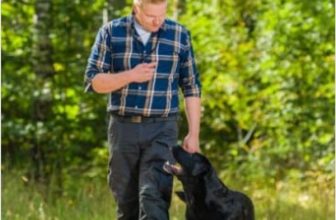
One of the hardest problems that dog owners face is when their dogs has separation anxiety. It may present as hyper-destructive behavior, increased vocalizating, house soiling or even self-injury when a dog is alone. Dogs are naturally social animals who crave human companionship, but when a dog spends not just his days, but his nights with his human pack, only to be cast off into the long and often cold night while his human is in a faraway room, that’s not just loneliness, it’s an anxiety disorder known as separation anxiety — and it’s bad for both you and for him. In this blog, you will learn how to cure separation anxiety in dogs.
The good news is separation anxiety can be managed and, often, made a lot better — but you’ll need patience, persistence and the right approach. Here’s a deep dive into how to understand, treat and manage separation anxiety in dogs.
What is Separation Anxiety?
Definition of Separation Anxiety in Dogs Separation anxiety refers to a situation in which a dog experiences extreme stress as a result of being separated from their owner. Common signs include:
Ominous chewing and digging
Persistent barking or howling
Attempts to escape
Inappropriate urination and defecation indoors
Pacing, panting, or drooling
It’s critical to understand that these behaviors are not acts of spite or defiance. They are signs of real distress and fear.
Step 1: Rule Out Other Causes
Before beginning any treatment, consult your vet to ensure there aren’t any health issues or other behavioral conditions that can mimic separation anxiety. Occasionally house-soiling or destructive behavior is also the result of medical problems, inadequate exercise or poor training.
Step 2: Control Your Dog’s Environment This refers to both at home and on the leash.
Create a Safe Space:
Skip the crate — which can aggravate anxiety in some dogs — and arrange a comfortable, dog-proofed space with windows and toys, and objects that carry your scent, like a piece of clothing you’ve worn.
Enrichment:
Omit puzzle toys, long-lasting chews or treat-dispensing balls to keep him occupied while you’re gone. A stuffed, frozen Kong can be comforting and distracting for some dogs.
Background Noise:
Consider using calming music or white noise. Some research has indicated that reggae or classical music may help sooth anxious dogs, but pay attention to how your own dog responds and modify based upon the reaction.
Step 3: Set a Routine Everyone Can Count On
Dogs thrive on routine. Establish consistent times for walks, meals, play and being alone. Your dog already knows what to expect and will be anxious the less time he is waiting.
Step 4: More Mental and Physical Stimulation
A tired dog is not as likely to be a stressed dog. Give your dog lots of physical activity and mental stimulation before you leave. Things like long leisurely walks, a game of fetch, a scent work game, or some training sessions can help to burn off some excess energy and relieve their anxiety.
Step 5: Play Down Departures and Arrivals
Try to keep your arrivals and departures as low-profile as possible. Highly emotional goodbyes or greetings can actually compound your dog’s stress around being left alone. Go out, come back inside and just let it be, then when your dog is calm give attention.

6: Behavior Modification: Desensitization and Counterconditioning.
Counterconditioning
Counterconditioning can work for mild cases. Create positive associations by giving your dog something enjoyable-like a favorite chew, treat, or special toy-whenever you leave, so your departure becomes linked with something good. For instance, give your dog a food puzzle or a special chew only when you leave and take it away when you return.
Note: This method is most appropriate for mild cases. Very anxious dogs won’t eat by themselves, so you may have to restructure your strategy.
Systematic Desensitization
For moderate to severe separation anxiety, a systematic desensitization program is needed. This includes gradually acclimating your dog to being alone in very short increments and keeping them calm at every step.
How to Desensitize Your Dog:
Begin small: Leave your dog alone for just a few seconds then re-enter before he’s showing any signs of stress.
Extend time: Gradually increase the period you’re gone, coming back before your dog becomes nervous.
Desensitize to Leaving Cues:
Your dog gets anxious when you grab the keys or slip on shoes. Do these cues without actually going out, so they no longer become associated with your departure.
Practice Makes Perfect:
Briefly leave your dog throughout the day, and only increase the length of your absences when your dog remains calm and relaxed.
During the process it is important to ensure your dog is not alone outside of training lessons. Rope in friends, family or your friendly pet-sister to avoid backslides.
Step 7: Professional assistance and medication
If your dog’s anxiety is extreme or not improving, seek help from a certified dog trainer or veterinary behaviorist who uses positive reinforcement methods. You may need to use medication to stabilize your dog while you work on behavior modification.
Medications Commonly Used:
- Clomipramine (Clomicalm): FDA approved for separation anxiety; takes 4–6 weeks to work.
- Fluoxetine (Reconcile/Prozac): Another option approved by the FDA, also takes weeks to kick in.
Veterinarians may prescribe immediate-release drugs, such as trazodone or diazepam, to be used for specific events or as needed.
Medication is not a silver bullet, but it can bring your dog’s anxiety down to a level that makes training effective. As with any new medication or change in habit, consult your veterinarian first.
Step 8: Tips and Home Remedies
- Doggy Daycare / Pet Sitting: If possible, look into doggy daycare or a dog walking service that provide exercise throughout the day for your dog.
- Interactive Play : Spend time training or playing with your dog prior to leaving, to give him or her a happy departure.
- Don’t Punish: Do not ever use punishment as a means of dealing with anxiety-driven behavioral issues. This would simply add to their stress and could make things worse.
- Positive Reinforcement: Praise your dog for being calm and independent, when you’re home and during training.
Can Separation Anxiety Be Treated?
5 There’s no magic pill or one-size-fits-all cure for separation anxiety, but patience, consistency, and the right treatment, nearly all dogs can learn to be alone and live happier, more stress-free lives. It may take time-progress can sometimes be in seconds at a time-but with time you can make a world of difference to your dog.
Conclusion
Curing Separation Anxiety in Dogs Here are several ways to go about curing separation anxiety in dogs:
Rule out medical issues
Keep it safe and fun
Create a consistent schedule One of the hardest parts of working at home can be the lack of structure and separation between work and life.
Use them a lot and make the use interesting
Now utilize any behavior modification like desensitization and counterconditioning
And get professional help, and if necessary medication.
Above all else, know that your dog’s anxiety is not their fault. With the right strategies, patience and compassion, you can help your dog to feel safe and confident, even when you are not around.
If you’re having difficulty or progress appears to plateau, don’t hesitate to contact a certified professional trainer or veterinary behaviorist for assistance. Needy Dogs and Separation Anxiety You and your dog needn’t suffer from separation anxiety alone







